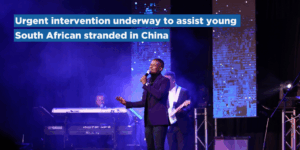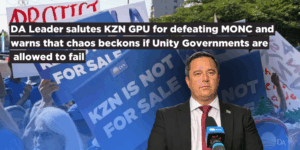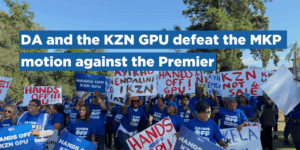President Ramaphosa inherited a health system that is in disarray within various provinces. Despite Health Minister Aaron Motsoaledi overseeing both the Life Esidimeni tragedy and the KZN oncology crisis – claiming 144 and over 500 lives respectively – he remains in his job.
At a national level, there are too few clinics with 3 182 clinics in South Africa, each serving 16 971 people on average, whilst the WHO suggests a clinic to population ratio of no less than 1:10 000. South Africa has insufficient medical practitioners with less than one (only 0.7) physicians per 100 000 population, and 2.2 nurses per 100 000 population, leaving us well behind peer and OECD nations.
This is the state of healthcare in South Africa.
As of now, the oncology crisis in KwaZulu-Natal is still not solved and there was and still is a major shortage of doctors, nurses and medical personnel. Various hospitals and clinics are and were in a dilapidated state and have a major shortage of working medical machinery, essential medicines and other medical equipment.
To this end, President Ramaphosa made three seemingly disconnected promises during his State of the Nation Address. They were:
“This year, we will take the next critical steps to eliminate HIV from our midst. By scaling up our testing and treating campaign, we will initiate an additional two million people on antiretroviral treatment by December 2020. We will also need to confront lifestyles diseases such as high blood pressure, diabetes, cancers and cardiovascular diseases.”
“In the next three months we will launch a huge cancer campaign similar to the HIV counselling and testing campaign. This will also involve the private sector as we need to mobilise all resources to fight this disease.”
“The time has now arrived to finally implement universal health coverage through the National Health Insurance. The NHI Bill is now ready to be processed through government and will be submitted to Parliament in the next few weeks. Certain NHI projects targeting the most vulnerable people in society will commence in April this year.”
In respect of the first two promises, no campaigns on either HIV or cancer have been rolled out yet. Where NHI is concerned, the various NHI pilots have been failing and have faced serious financial concerns leading to the late payment of medical professionals. The NHI is a costly and unworkable system that will bankrupt South Africa and lead to further degradation of the public health system.
President Ramaphosa’s first move should have been to announce the scrapping of the NHI in favour of a more sustainable and affordable hybrid system, which will still ensure all South Africans receive healthcare cover.
He should have placed the KwaZulu-Natal and Gauteng Health Department’s under administration and assessed other provincial health departments’ staff shortages, ongoing strikes by nurses and health workers, and equipment and medicine shortages.
Ramaphosa should introduce an Expanded Clinic Building Programme in under-served areas nationwide, with an additional R2 billion allocated as a cross-subsidy for building and staffing to assist in reaching the DA-adjusted national goal of building 50 new facilities.
The announcement of a few roadshows and the implementation of the unworkable NHI will not solve our country’s healthcare shortfalls.
The above was presented by DA Leader Mmusi Maimane at a press conference to review President Cyril Ramaphosa’s first 100 days in office. Read the full report here




